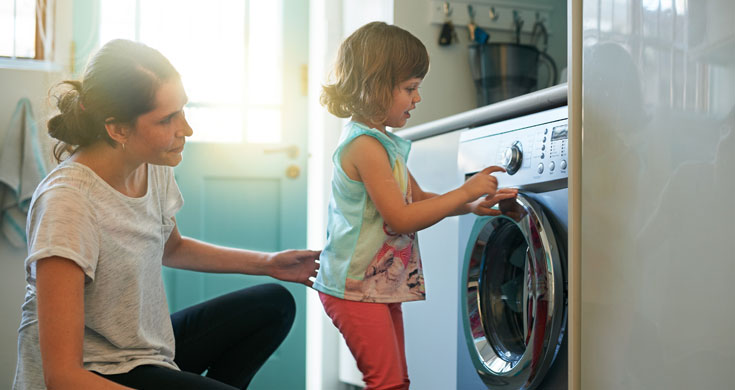The gender gap, which refers to the differences between women and men in a variety of areas such as salaries, career opportunities, and healthcare, has been well documented for many years. There is even a difference in the price of consumer goods and services, known as the “pink tax.” And the disparities aren’t just in the workplace and the marketplace. Many women with full-time jobs and challenging careers still find themselves carrying a disproportionate amount of the workload at home. And now, recent studies show that gender inequality may apply to the kids in the home as well.
While parents and educators have started to prioritize the need to encourage and support educational equity for female students in fields like science, technology, engineering, and math (STEM), evidence suggests that parents may be subconsciously enforcing gender biases in the home that lay the groundwork for the wage gap and gender inequality later in adulthood.
Girls’ Chores vs. Boys’ Chores
For most parents, assigning chores and distributing allowances is simply a matter of getting the kids to help out around the house, learn about responsibility and accountability, and establish the value of a good work ethic. But according to some studies, the family unit can unwittingly operate as a microcosm of society at large, where certain tasks and chores are viewed as “girls’ work” vs. “boys’ work.” According to a study by UNICEF, girls around the world spend as much as 40 percent more time on household chores than boys.
And while it might not seem like a big deal to ask your daughter to wash the dishes and help out with the laundry while your son helps to cut the lawn or does more “masculine,” and perhaps less time-consuming, chores like taking out the garbage, the disparities in the distribution of labor and expectations can have long-term effects. Factors like earning more allowance, spending less time on chores than girls, and being asked to do less (if any) of the unpaid work in a household may establish patterns of inequality between boys and girls. And this inequality may seem normal for both the boys and the girls.
The good news is that parents can take proactive steps to help build a more equitable and fair distribution of labor at home that may help break gendered patterns and expectations.
How to Avoid Reinforcing Gender Inequality
One of the problems with gender bias is that it is often subtle and unconscious. One of the best ways for parents to determine whether they are unintentionally promoting bias and gender disparities between children is to regularly evaluate the distribution of chores and rewards around the home and rotate chores so that everyone contributes equally:
- Create a rotating schedule of weekly or monthly chores that the children perform and contribute to equally
- Eliminate categories based on “female” or “male” chores
- Establish the idea of equal pay for equal work by making allowances equitable
- Assign chores in specific increments of time so that everyone puts in the same amount of work regardless of how long a specific chore might take
- Offer feedback and encourage the girls to speak up when they feel there is an unfair distribution of labor or an issue with a task, and to ask for more responsibility and challenges
Comments?
Have you observed the effects of early gender biases in young children firsthand, or have tips or suggestions for how to make the distribution of chores and allowance more equitable for boys and girls? Please share your thoughts, experiences, and suggestions in the comments section.





































